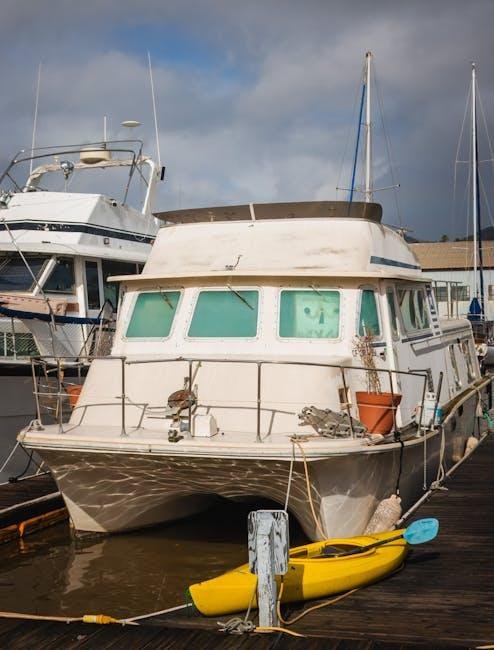When it comes to navigating the unpredictable ballet of choppy waters, choosing the right kayak can make all the difference between a thrilling adventure and an arduous struggle. Picture gliding over undulating waves, each swell a canvas for the skilled paddler, or battling relentless gusts that threaten to tip you off course. Whether you’re a seasoned kayaker or a novice eager to dip your paddle into more challenging conditions,understanding how to select the right vessel is essential. In this article, we’ll explore the key features to consider, from hull design to stability and maneuverability, ensuring you’re equipped to tackle those rippling adventures with confidence. Let’s dive into the world of kayaks designed for the wild heart of choppy waters, where every wave holds the promise of adventure.
Navigating Stability and Design Features for Choppy Conditions
When venturing into choppy waters, the importance of stability cannot be overstated. Kayaks designed for rough conditions frequently enough feature a wide hull that enhances balance and provides a solid foundation against turbulent waves.Opting for a kayak with a low center of gravity also contributes to improved stability, allowing paddlers to maintain control even in gusty winds. additionally,many kayaks are equipped with features such as rounded or flattened hull designs which can help glide over waves smoothly,minimizing the risk of capsizing in unpredictable conditions.
Design elements play a crucial role in ensuring a safe and enjoyable experiance. Consider kayaks with skegs or rudders that offer better tracking in choppy waters, aiding in straightforward navigation. Look for models with bulkheads and sealed hatches for added buoyancy, which is essential when conditions become rough.Here’s a rapid look at some ideal features:
| Feature | Benefits |
|---|---|
| Wide Hull | Enhanced stability and balance |
| Low Center of Gravity | Improved control in rough waters |
| Skegs/Rudders | Better tracking and navigation |
| Bulkheads | Increased buoyancy and safety |

Understanding Hull Types: Which shapes Excel in Rough Waters
When navigating through choppy waters, the shape of your kayak’s hull plays a crucial role in ensuring stability and performance.Displacement hulls, characterized by their pointed bows and narrow profiles, slice through waves efficiently, offering minimal resistance. These designs are best suited for open water and rough conditions, as they allow the kayak to ride over swells with grace. On the other hand, planing hulls boast flatter bottoms and are designed for speed on calmer water. however, in turbulent environments, they can become unstable and result in a bouncy ride.
Beyond the basic hull shapes, various features can enhance a kayak’s performance in rough waters.Key considerations include:
- Width: A wider kayak generally provides more stability,making it less likely to tip.
- Rockers: Kayaks with more rocker (curvature in the hull) can turn more easily, a valuable trait in choppy conditions.
- Rudders or Skegs: These accessories help maintain directional control, especially when waves are strong.
Understanding these factors can mean the difference between a thrilling ride and an exhausting battle against the elements. Consider testing different hull types to discover which one feels most comfortable and provides the best performance for your paddling adventures.

The importance of Weight Capacity and Maneuverability
When navigating choppy waters, understanding the weight capacity of your kayak is crucial for both safety and performance. A kayak that can handle your weight, along with any additional gear, ensures stability and buoyancy. If you exceed the weight limit, you risk capsizing or losing control, particularly in turbulent conditions. look for kayaks that offer a sufficient weight capacity, especially if you plan on carrying extra equipment like fishing gear or weather-protective gear.
Maneuverability is another essential factor to consider. A kayak that responds well to paddling techniques will allow you to slice through windy conditions and navigate turbulent waters more effectively. When assessing maneuverability, consider the kayak’s length and width. Generally, shorter kayaks provide enhanced agility, making them easier to turn, while longer kayaks offer straight-line performance but can be more cumbersome in tight situations. when choosing your kayak, examine the following:
- Hull Design: A hull that is wide with a pointed bow enhances stability.
- Rudder System: Additional control mechanisms aid in steering and adjusting direction.
- Weight Distribution: Ensuring balanced loads will enhance overall responsiveness.
| Kayak Type | Weight Capacity (lbs) | Maneuverability |
|---|---|---|
| Recreational | 250-350 | High |
| Touring | 350-500 | Medium |
| Whitewater | 200-300 | Very High |

Essential Accessories to Enhance Your Choppy Water Experience
To truly elevate your time on choppy waters, packing the right accessories is crucial. A high-quality spray skirt not only keeps water out but also enhances your comfort level, allowing you to focus on navigation without worrying about getting soaked. Additionally,consider investing in a sturdy personal flotation device (PFD) that fits snugly yet allows for freedom of movement. Look for one with extra padding for additional protection and pockets for essentials. A whistle and light are also essential, ensuring you’re equipped for safety and visibility should the water conditions take a sudden turn.
Your experience can be further enhanced with a few specialized items. For instance, a kayak anchor is invaluable on windy days, giving you the ability to remain in place while you fish or simply take in the scenery. A waterproof phone case is vital for staying connected without risking damage to your device. Additionally, consider a deck bag to keep your gear organized and accessible while on the water. By preparing with these essential tools, you’ll find navigating choppy waters not only safe but enjoyable.
Key Takeaways
In the world of kayaking, the allure of choppy waters beckons adventurers with promises of exhilarating rides and breathtaking scenery. As you embark on this journey, remember that choosing the right kayak is not just about picking the brightest color or the latest model; it’s about finding the vessel that aligns with your skills, comfort, and the unpredictable embrace of the waves. The right kayak will empower you to navigate those rolling swells with confidence and grace, turning possibly daunting conditions into exciting challenges.
As you weigh your options, consider the insights shared in this guide. Take your time to test out different models, seek advice from seasoned paddlers, and, most importantly, listen to your instincts.Each paddle stroke you take in choppy waters can transform into a story waiting to unfold, filled with the thrill of adventure and the serenity of nature. So gear up, trust in your choice, and let the currents lead you to uncharted territories. Happy paddling!
